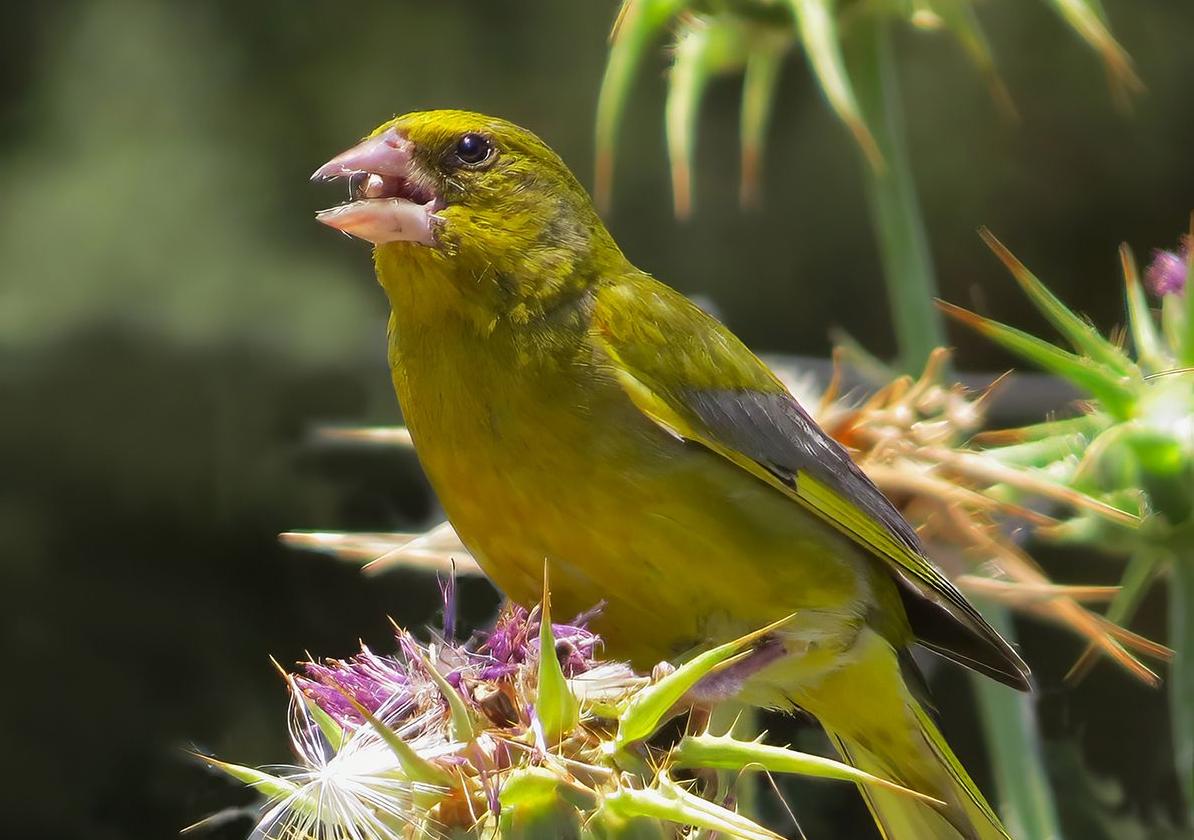European greenfinch
The Andalucía Bird Society recommends looking out for the Chloris chloris this month
Peter Jones
Ronda
Friday, 13 December 2024, 15:09
The greenfinch is a familiar bird for most of us and local birds always seem to be more colourful than their counterparts in Northern Europe, ... maybe it is just the better and clearer light we enjoy down here in Andalucía? The most likely reason we are so familiar with this beautiful finch is its ability to occupy a wide diversity of habitat types including urban areas, it is closely associated with human activity. To give readers an idea of this diversity in habitat they can be found in orchards, parks, gardens, farmland where some trees offer a place for nesting and if riparian woodlands occur within agricultural areas, then these are particularly favoured.
The parasite Trichomonas gallinae was known to infect pigeons and raptors, but beginning in Great Britain in 2005, carcasses of dead European greenfinches and common chaffinches were found to be infected with the parasite. The disease spread and in 2008, infected carcasses were found in Norway, Sweden and Finland and a year later in Germany. The spread of the disease is believed to have been mediated by common chaffinches, as large numbers of the birds breed in northern Europe and winter in Great Britain.
-
-
www.andaluciabirdsociety.org
In Great Britain, the number of infected carcasses recovered each year declined after a peak in 2006. There was a reduction in the number of European greenfinches from around 4.3 million to around 2.8 million, but no significant decline in the overall number of common chaffinches. A similar pattern occurred in Finland where, after the arrival of the disease in 2008, there was a reduction in the number of European greenfinches but only a small change in the number of common chaffinches. This catastrophe for the greenfinch seems to have not affected our local birds, or at least not significantly.
Interestingly, within the Iberian Peninsula, we have three subspecies of greenfinch with C.c.aurantiiventris abundant and it is both resident and a partial migrant, smaller than the nominate race it is much brighter coloured. Many of this subspecies move from northern parts of the peninsula and winter here and some will make the crossing to North Africa. Birds native to the peninsula are joined by the nominate race C. chloris during winter from populations in northern Europe. The third subspecies C.c. vanmarli is largely confined to northwestern Spain and throughout Portugal, where it is abundant.
Whatever greenfinch we observe here they are a joy and their song of intermittent twittering and wheezing always makes me smile. The distinctive wheeze makes me refer to it as the 'asthmatic finch'.
¿Tienes una suscripción? Inicia sesión
